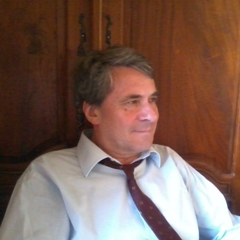Fractional Dynamics
A special issue of Fractal and Fractional (ISSN 2504-3110).
Deadline for manuscript submissions: closed (31 December 2017) | Viewed by 48854
Special Issue Editors
Interests: wavelets; fractals; fractional and stochastic equations; numerical and computational methods; mathematical physics; nonlinear systems; artificial intelligence
Special Issues, Collections and Topics in MDPI journals
Special Issue Information
Dear Colleagues,
Modeling, simulation, and applications of Fractional Calculus have recently become an increasingly popular subject, with an impressive growth concerning applications. The founding and limited ideas on fractional derivatives have achieved an incredibly valuable status. The manifold applications in mathematics, physics, engineering, economics, biology, and medicine have opened new challenging fields of research. For instance, in mechanics, a suitable definition of the fractional operator has shed some light on viscoelasticity, by explaining memory effects on materials. Needless to say, these applications require the development of practical mathematical tools to obtain quantitative information from models, newly reformulated in terms of fractional differential equations. Even confining ourselves to the field of ordinary differential equations, the Bagley-Torvik model showed that fractional derivatives may actually arise naturally within certain physical models, and are not mere fancy mathematical generalizations.This Special Issue focuses on the most recent advances in fractional calculus, applied to dynamic problems, linear and nonlinear fractional ordinaries and partial differential equations, integral fractional differential equations and stochastic integral problems arising in all fields of science, engineering applications, and other applied fields.
Prof. Dr. Carlo Cattani
Prof. Dr. Renato Spigler
Guest Editors
Manuscript Submission Information
Manuscripts should be submitted online at www.mdpi.com by registering and logging in to this website. Once you are registered, click here to go to the submission form. Manuscripts can be submitted until the deadline. All submissions that pass pre-check are peer-reviewed. Accepted papers will be published continuously in the journal (as soon as accepted) and will be listed together on the special issue website. Research articles, review articles as well as short communications are invited. For planned papers, a title and short abstract (about 100 words) can be sent to the Editorial Office for announcement on this website.
Submitted manuscripts should not have been published previously, nor be under consideration for publication elsewhere (except conference proceedings papers). All manuscripts are thoroughly refereed through a single-blind peer-review process. A guide for authors and other relevant information for submission of manuscripts is available on the Instructions for Authors page. Fractal and Fractional is an international peer-reviewed open access monthly journal published by MDPI.
Please visit the Instructions for Authors page before submitting a manuscript. The Article Processing Charge (APC) for publication in this open access journal is 2700 CHF (Swiss Francs). Submitted papers should be well formatted and use good English. Authors may use MDPI's English editing service prior to publication or during author revisions.
Keywords
- mathematics
- physics
- mathematical physics
- mechanics
- fractional calculus
- fractal
- fractional dynamical systems
- fractional partial differential equations






